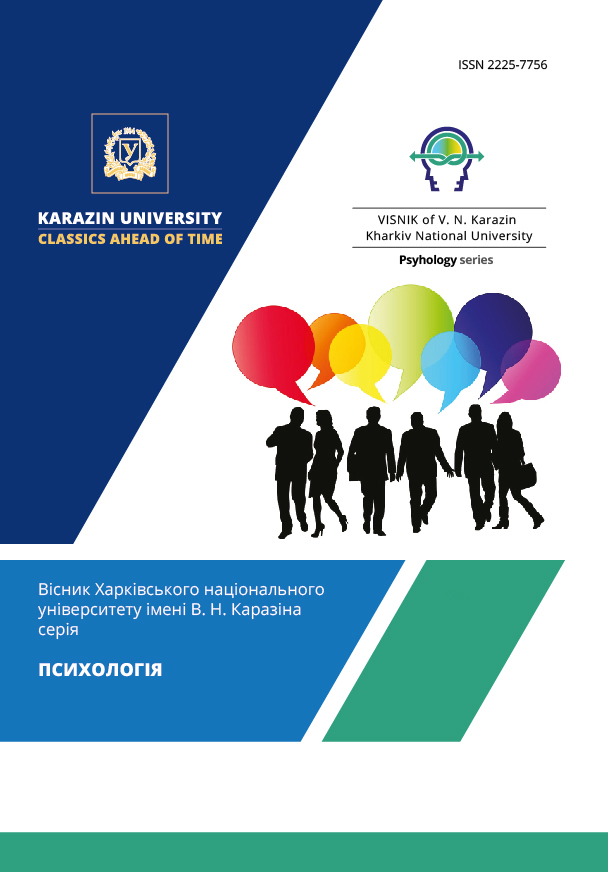Diagnostics of Professional Identity Statuses in Ukraine: Comparison of the Results of Two Questionnaires
Abstract
The article deals with the problem of using questionnaires to study professional identity in Ukraine. Now there is a significant lack of methods for studying professional identity, the obsolescence of their methodology, as well as the lack of Ukrainian-language tools. The purpose of this study was to compare the results of two methods of studying professional identity statuses in the Ukrainian scientific space – the method of studying professional identity of L.B. Schneider and the questionnaire of professional identity statuses of students by A.A. Ozerina. These two methods are among the most commonly used for diagnosing the professional identity of adult subjects, regardless of their professional affiliation. During the investigation, a cluster analysis was performed to take into account all possible variants of the formation of professional identity statuses according to A.O. Ozerina, after which the results of both methods were compared by calculating percentages, as well as applying the Pearson's chi-squared test. The results showed a weak correspondence between the statuses of professional identity according to L.B. Schneider and A.O. Ozerina: of all the options for calculating statuses and ways to avoid the problem of pseudo-positive identity, only the achieved identity coincided between the two methods in 4.3% -17% of cases from the total number of subjects studied. Especially problematic was the determination of premature identity, the percentage of coincidence between methods for which in none of the calculation options exceeded 2.2% of cases from the total number of subjects studied. In addition, the absence of a statistically significant relationship between the questionnaires considered was determined using Pearson's chi-squared test. Suggestions are made about the inexpediency of using or adapting these questionnaires in Ukrainian.
Downloads
References
Crocetti, E., Rubini, M., & Meeus, W. (2008). Capturing the dynamics of identity formation in various ethnic groups: Development and validation of a three-dimensional model. Journal of adolescence, 31(2), 207-222. https://doi.org/10.1016/j.adolescence.2007.09.002
Grecov, A. G., & Azbel', A. A. (2006). Methods of studying the statuses of professional identity. Uznaj sebja. Psihologicheskie testy, 143-155 [In Russian].
International Test Commission. (2013). ITC guidelines on test use. Recuperado de. http://www.intestcom.org/files/guideline_test_use.pdf
Luyckx, K., Goossens, L., Soenens, B., & Beyers, W. (2006). Unpacking commitment and exploration: Preliminary validation of an integrative model of late adolescent identity formation. Journal of adolescence, 29(3), 361-378. https://doi.org/10.1016/j.adolescence.2005.03.008
Marcia, J. E. (1966). Development and validation of ego-identity status. Journal of Personality and Social Psychology, 3(5), 551–558. https://doi.org/10.1037/h0023281
Ozerina, A. A. (2011). Development of a questionnaire for the diagnosis of students' professional identity. Izvestija Dagestanskogo gosudarstvennogo pedagogicheskogo universiteta. Psihologo-pedagogicheskie nauki, (2), 15-22 [In Russian].
Shnejder, L. B. (2007). Personal, gender and professional identity: theory and methods of diagnosis. [In Russian].
Sotsiolohichna hrupa "Reitynh" (2012, 25 of May). Language questions: results of recent research in 2012. https://ratinggroup.ua/research/ukraine/yazykovoy_vopros_rezultaty_poslednih_issledovaniy_2012.html [In Ukrainian].




